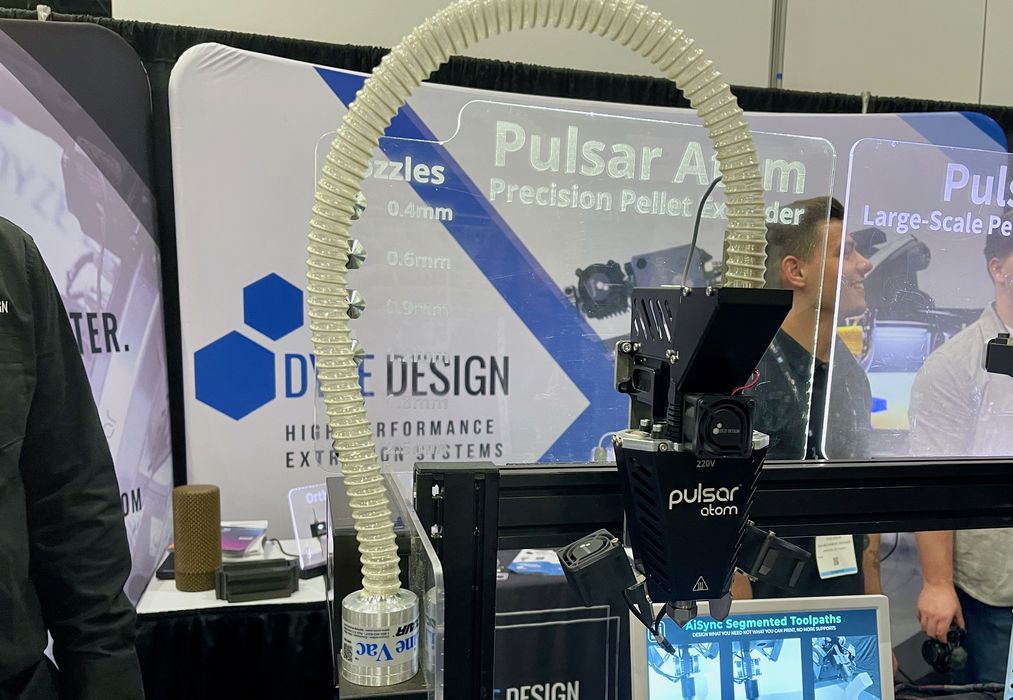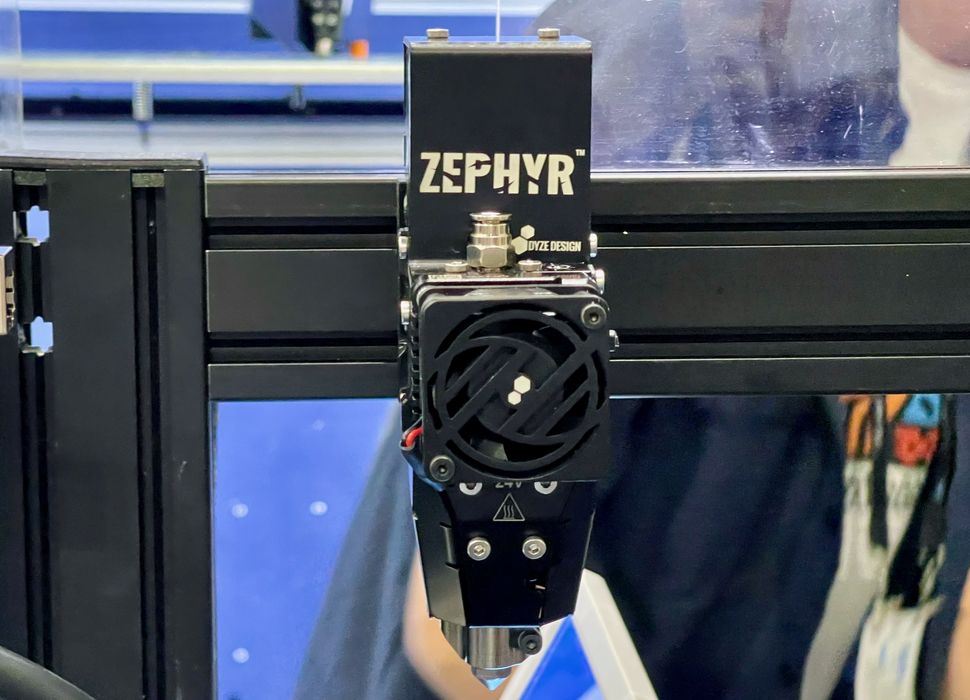
Dyze Design has two very interesting hot ends that address different needs.
The Montreal-based company showed us their Pulsar Atom and Zephyr systems recently.
Let’s look at the Pulsar Atom, shown at top. This is actually a pellet extruder, using the FGF process. FGF is rapidly becoming a more popular approach to lowering material costs, which can be as much as 10X lower than using filament.
Typically pellet extruders have focused on sheer volume: FGF is quite attractive for large format 3D prints that would consume vast amounts of material. Lowering that cost through the use of pellets via FGF is an obvious move. However, large objects typically have less concern about resolution as larger layer lines tend to visually disappear due to the object size. For that reason, fat diameter nozzles are often used.
The Pulsar Atom3D seems to be a bit different. It indeed offers wider nozzle options, but also can be used with a standard diameter 0.4mm nozzle. That means it can be used for precision printing. In fact, Dyze Design’s official name for the product is the “Pulsar Atom Precision Pellet Extruder”.
The hot end of this component can reach 450C, enabling it to be used with a huge range of engineering materials. It is also capable of reliably extruding up to 800g of material per hour, which is far more than typical extruders.

Here you can see how the pellets are delivered to the Atom: through a gravity fed tube from a pellet hopper. In the image the hopper is upside down, normally it’s held higher up.
Somehow Dyze Design managed to squeeze all of this capability into a lightweight pellet system weighing less than 1.5kg. This makes it ideal to be used with robotic systems: a lighter toolhead means less expensive robots can be used.
The other system from Dyze Design we’re looking at today is the Zephyr high flow extrusion system.

High flow is the key attribute here: this enables high speed printing, where as much material as possible must be delivered. As long as the motion system can keep up, you will get prints done far faster.
The Zephyr can reach 500C, also enabling use of many exotic engineering materials, including ULTEM and PEEK. But what about the flow rate?
Dyze Design lists the flow rate for the Zephyr at 685g per hour, or 154 cubic mm per second. That’s dramatically higher than the “high flow rate” extruders of many common 3D printers, which tend to top out at around 35 cubic mm per second.
Most of the high speed specifications you see from recent 3D printers are a bit cooked: they hit high speeds but only when printing 0.1mm layers. That results in less material output per second, so their lower capacity extrusion systems can be moved at higher speeds. In practice with reasonable layer heights the speeds are much slower.
But with a Zephyr that would not be the case: the vastly higher flow rate would enable high speeds at almost any layer height. More material can be printed per second.
Most of Dyze Design’s customers are 3D printer manufacturers, but it is quite possible for individuals to modify their existing 3D printers to make use of these two high-end extrusion systems.
Via Dyze Design
